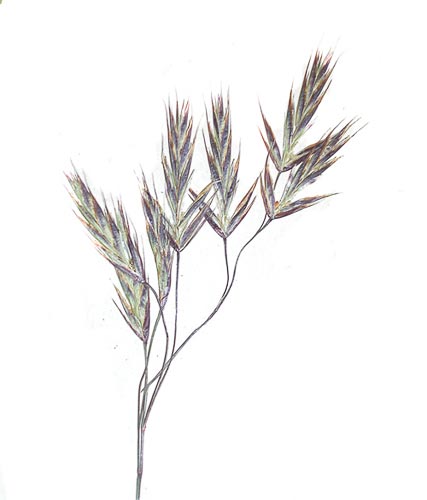Relatives
Bromopsis variegata (Bieb.) Holub - Variegated Brome.
Taxonomic position.
Family Poaceae Barnhart, genus Bromopsis Fourr.Synonyms:
Zerna variegata (Bieb.) Nevski, Bromus variegatus Bieb.Morphology and biology.
Perennial plant 40-60 cm tall, forms mats. Sheaths glabrous, entire or decomposing into parallel fibers, not reticulate. Leaves usually glabrous, less often weakly hairy above, flat, 4-5 mm wide. Panicle about 5-7 cm long, erect, very compressed, with short branches. Spikelets dark violet-striped, 5-7-flowered. Lemma with straight awn, 5-10 mm. Spikelets pubescent (var. pubescens) or glabrous (var. lejantha). Cross-pollinated anemophilous plant. Flowers in May, fruits in June. 2n=28.Distribution:
Endemic to Caucasus.Ecology.
Occurs in high montane zone. Forms subalpine and alpine meadows.Use and economic value.
One of the best forage plants of subalpine and alpine zones of the Caucasus. Winter-hardy and quite drought-resistant.References:
Brezhnev DD., Korovina ON. 1981. Wild relatives of cultivated plants of the USSR flora. Leningrad: Kolos. 375 p. (In Russian).Grossheim AA. 1939. Flora of Caucasus. 2nd ed. V.1. 402 p. (In Russian).
Rozhevits RYu., Shishkin BK., eds. 1934. Flora URSS. V.2. 778 p. (In Russian).
Tzvelev NN. 1976. Grasses of the Soviet Union. Leningrad: Nauka. 788 p. (In Russian).


